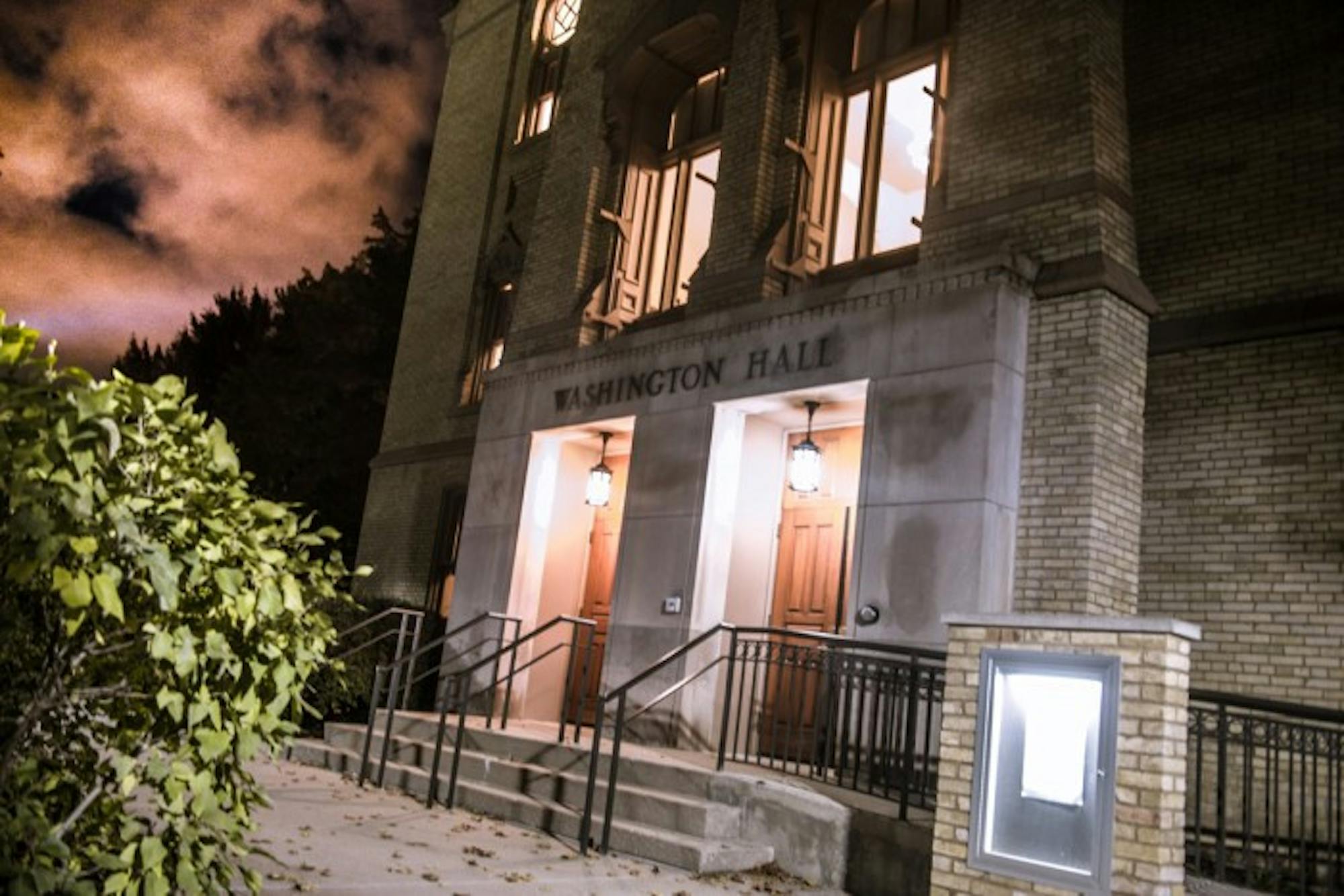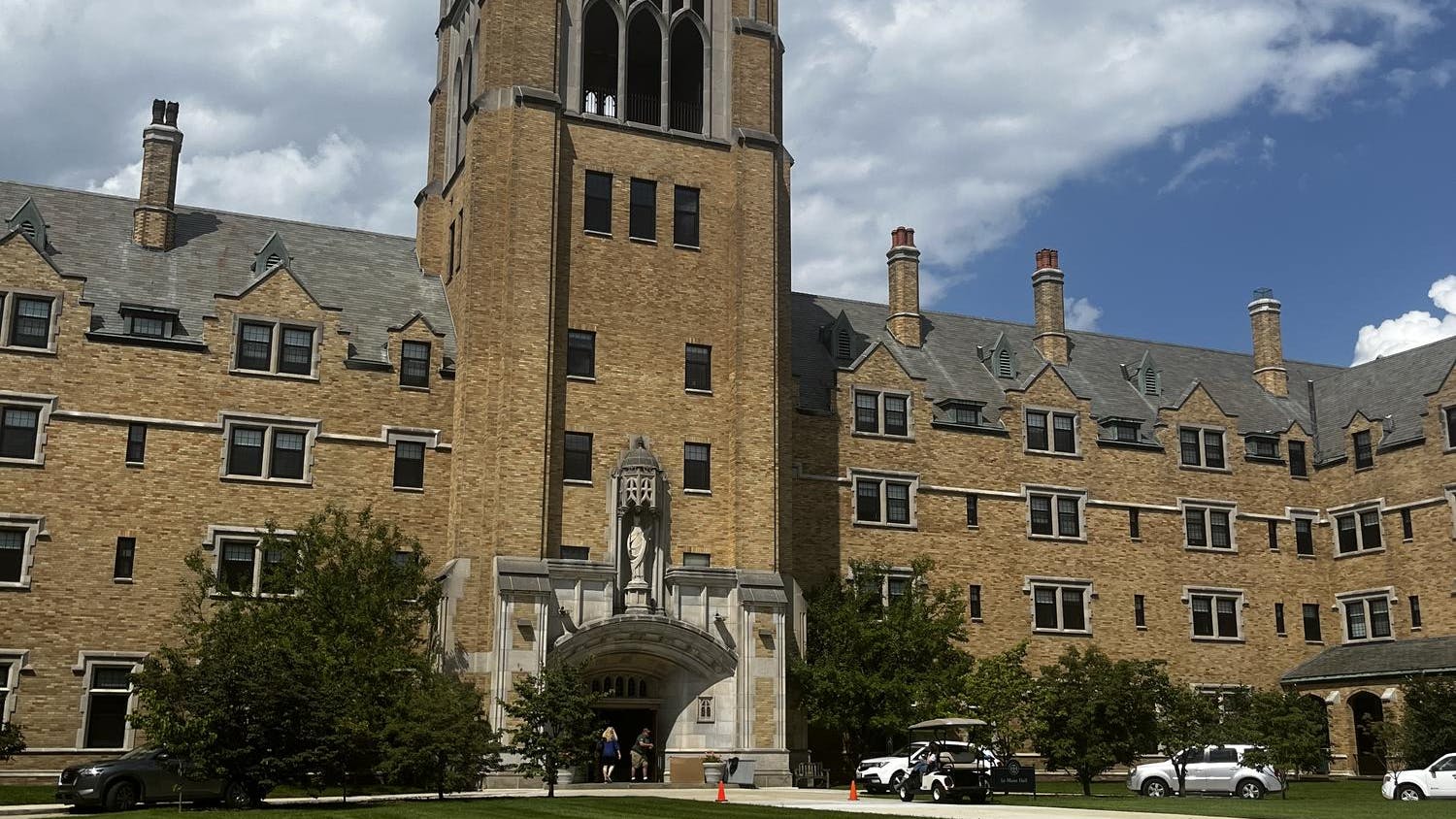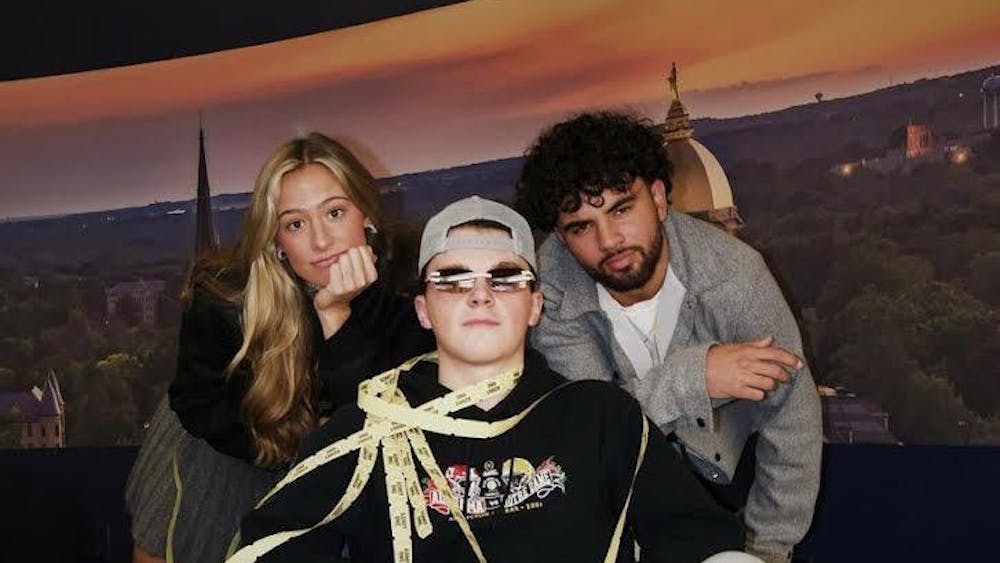In 1920, All-American football player George Gipp, locked out of his dorm, slept on the steps of Washington Hall and as a result contracted pneumonia and died. Not long after, the Gipper was sighted riding a white horse up the steps of Washington Hall. His ghost has haunted the building ever since.
That’s one version.
The “Ghost of Washington Hall” has been a staple of Notre Dame’s history, attracting the interest of ghost hunters, curious students and chroniclers of the haunted for nearly a century. They report footsteps, moved objects and the sound of French horns, or bugles, or trumpets, wafting ethereally through the hall.
According to “Washington Hall at Notre Dame: Crossroads of the University, 1864-2004,” a book by Film, Television and Theatre emeritus professor Mark C. Pilkinton, the legend around the theatre building began and solidified in 1921, when Scholastic magazine and the Dome yearbook reported footsteps and the sound of brass instruments. The ghost was first connected to Gipp in 1926, when, as the story goes, a student named Pio Montenegro exited what is now LaFortune Student Center and saw the Gipper on the white horse.
The ghost, according to Pilkinton’s book, has also been reputed to be:
- A “student professor,” responsible for the spooky brass music
- A construction worker
- A steeplejack (yes, those exist)
- A brother, also responsible for the horns
- An anonymous quarterback, most definitely not the Gipper
- A student who fell to his death in the 1950s
Bigger issues, too. In 1970, Observer writer T.C. Treanor spent a night in Washington Hall, waiting for the ghost. Building staff let him in, but the one student who still lived in the building was having none of it. Neither was the reporter.
Treanor, who graduated in 1973 and is now a lawyer and theatre critic, said he used the ghost story to try to criticize what he saw as his generation’s preoccupation with supernatural beings, at a time when New Age spirituality was beginning to emerge.
“If you thought that rational thinking had limits, you were of the party that was open to visitations from the invisible universe,” he said Sunday. “I really wasn't. I was the son of a scientist. I had grown up through conventional Catholic education, which of course admitted to the presence of a world beyond, but it expressed that presence in a very rational way.”
The resulting “series” ended after two articles because Treanor saw no ghost. Nor did he expect to.
“Nobody really believes in ghosts — at least no one except marginal illiterates,” he wrote in 1970. “But people want to believe in ghosts — want desperately to believe in ghosts; poltergeists, witches, evil spirits, distilled or otherwise; demons incarnate evil possession. People want to believe it because they want an escape from reality; they want an escape from the rational; the categorized; the systematized. They want ghosts because they want to be afraid, and they want to be afraid because fear is the strongest emotion. Or maybe they're all stupid. In any event, it's not true. There are no ghosts in Washington Hall.”
“Rest in peace, Gipper,” Treanor concluded. “Sorry for having bothered you.”
If Treanor hoped that would put an end to the matter, it didn’t. He had been the latest in a long tradition of intrepid reporters spending the night in Washington Hall dating back to the 1940s, a tradition that continued the very next year, when another Observer reporter, Bill Eiler, set up shop in the auditorium with some friends and a photographer.
After several hours, atmosphere in the room changed and the group saw “a waving light-greenish figure ... suspended in the air in the left section of the balcony in front of the window curtain.” The photographer snapped a photo, and they hightailed it out of the building.
“Three hours and several Hail Mary’s later, the picture turned out and we had our proof,” Eiler wrote.
The accompanying photo was of an indistinct white blob.
Not only reporters braved the phantasmic for a night. Eiler’s 1971 article recounts meeting a girl who had taken part in a recent seance, though “she was very reluctant to divulge any details.” A 1989 Observer article details how a group of students took a Ouija board onstage, asking the ghost to talk to them.
“The pointer darted to ‘No’ and ‘Goodbye’ and stopped. When the students asked why, the pointer moved back and forth between the letters ‘S’ and ‘G,’ moved to ‘Goodbye’ again, and stopped,” the article said. “The students fled. Once out of Washington Hall, they looked back and saw that a security guard had just woken up. They had been warned just in time.”
People still ask Washington Hall assistant program manager Kathleen Van Vleet if they can spend the night in the hall (they can’t), but she’s happy to tell campus visitors, alumni and supernatural enthusiasts the story of the ghost of Gipp.
“I mean, It’s an old building,” Van Vleet, who has worked in the building for 12 years, said. “The steam heater makes a lot of noise. There’s also some acoustical weirdness, there’s some air shafts on the other side of the auditorium that make it sound like, depending on where you are, it can make people who are talking outside sound like they’re talking inside. I found that out the hard way when I started working here.”
Does she believe in the ghost? Van Vleet considered her words.
“Let’s say I don’t disbelieve,” she said.













